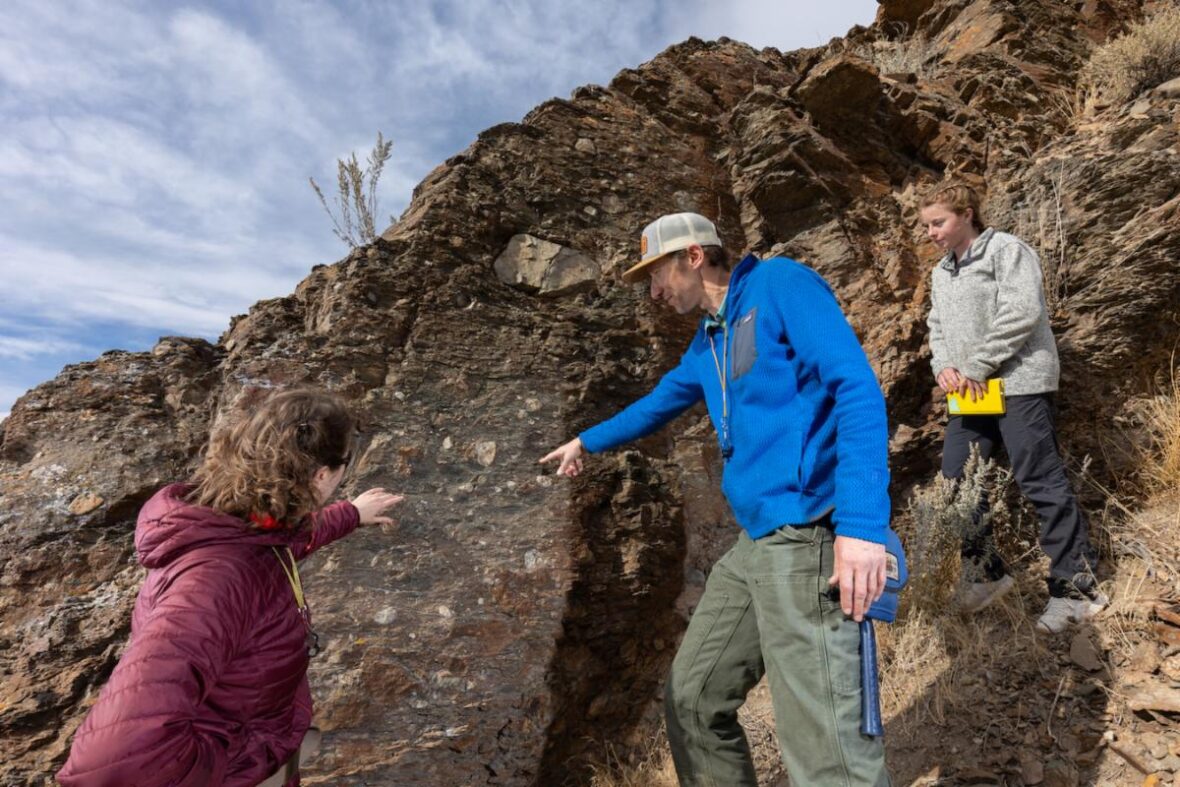
There is a 2-billion-year hole in what geologists know about planet Earth.
Two Idaho State University geosciences professors and their students are part of a research team seeking to fill in that knowledge gap.
They will be studying rocks that sit beneath the Great Unconformity. In scientific terms, an unconformity represents a surface that separates the rocks of two different geologic ages. The Great Unconformity exists across the globe — and closer to home, it leaves scientists with unanswered questions about how tectonics shaped the Northern Rockies.
“Here in the Northern Rockies, when you place your hand on the Great Unconformity in a place like Teton Canyon, you are touching billions of years of missing time — more than 40% of Earth’s history,” said Kendra Murray, an assistant professor of geosciences at Idaho State. “For geologists, rock records like this correspond to profound gaps in our knowledge about Earth’s history.”
Murray and Idaho State associate professor of geosciences Dave Pearson will gather samples from sites where the Great Unconformity lies exposed — along the Idaho side of the Tetons, in the Uinta Mountains in Utah and in southwestern Montana. Back in the lab, they will grind the samples down, allowing them to study individual mineral crystals under a high-powered microscope. By studying the samples’ chemical makeup, they hope to determine when rocks were deposited, or when they eroded, as the Great Unconformity developed.
Six Idaho State students will take part in the research.
“This project is an amazing opportunity to reveal a part of Earth’s geologic history that we don’t know much about,” said Anna Miller, a master’s geology student from Fishers, Ind.
Columbia University and Montana State University will also take part in the research, which is funded through an $800,000 National Science Federation grant.
Idaho State unveils health professions simulation lab
A new lab will allow Idaho State University health occupations students to learn in a simulated hospital setting.
The Health Occupations Simulation Lab includes seven simulated hospital rooms and two clinical rooms, designed to simulate a doctor’s office or an urgent care center. Students also can watch simulations through adjacent control rooms and classrooms.
The lab is designed to serve students in several fields — such as nursing, respiratory therapy and EMT programs.
“The interdisciplinary approach is very important especially in the clinical or hospital setting when health care providers from different disciplines work together to deliver effective and efficient patient care,” said Henry Oh, chair of Idaho State College of Technology’s health occupations department.
Next door, a second simulation lab is geared to nursing students.
“With the current shortage of clinical sites, simulation allows students to obtain clinical hours using real-life clinical scenarios,” said Jennie Brumfield, director of nursing programs at the College of Technology. “Utilizing simulation affords our students the opportunity to gain experiences that they may not otherwise see in the hospital setting.”
BYU-Idaho reports a fall enrollment drop
Brigham Young University-Idaho is reporting a fall enrollment decline of nearly 6%.
The Rexburg-based private school is reporting total enrollment of 24,131, including students in face-to-face instruction and on-campus students who are enrolled online and/or working on internships.
Last fall’s total came in at 25,630.
At 12,495, female students make up a slight majority of overall enrollment.
Meanwhile, 5,343 on-campus students are married — accounting for more than one fifth of total enrollment.
Previously, Idaho’s two other private four-year schools reported similar enrollment declines. Northwest Nazarene University saw a 7% drop, while enrollment decreased by 5% at The College of Idaho.
